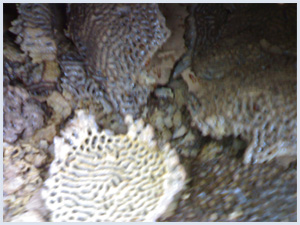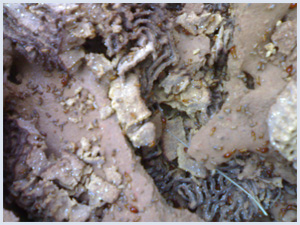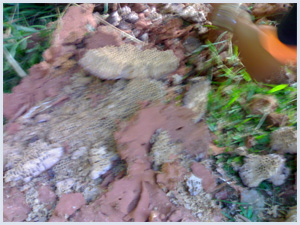Effective Treatment
A.RODENTS
Rodents include rats and mice. Rodents cause a lot of problems by exploiting the environment created by man. It brings a range of diseases such as hemorrhagic fever, salmonella poisoning, leptospiral jaundice and bubonic plague which are deadly diseases. It also contaminate food with their faeces/urine.
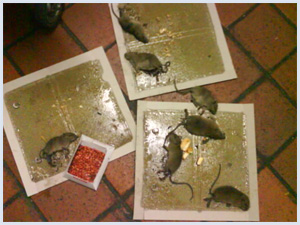
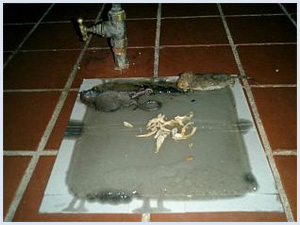
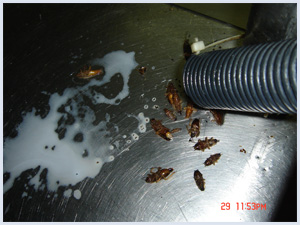 |
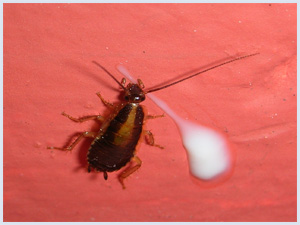 |
| Flash out treatment | Gel Baiting |
C.ANTS
The ants nest are located first as this will lead to the large established colonies of ants. The nests are normally lead in brick wall, hollow spaces in the wall and often at inaccessible locations. The nests are located and destroyed by using our insecticidal. This will kill the ants immediately.
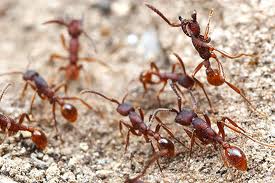
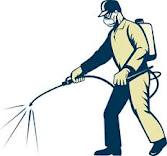
Mosquitoes are important pests because they feed on the blood of humans and animals and can carry diseases organisms in a very short period. These biting insects can spread malaria, dengue, yellow fever, filariasis and Japanese B-encephalitis. The immature stages of mosquitoes live in stagnate water, and they are known to breed in the water that collects in cans, old tires and other items around houses and buildings.

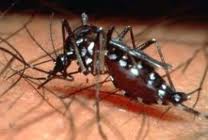
E. FLY
The house fly, Musca domestica is taxonomically placed in the insect order Diptera, family Muscidae. The housefly is commonly found in-door in kitchen, markets, stalls, shops, restaurants, toilets, animal sheds, on food or on the floor and elsewhere and out of the doors on breeding sites or on the ground especially where it has been contaminated with garbage, food waste and sewerage areas. These places may obtain diseases causing germs which stuck on the flies foregut, mouth parts and tarsi while breeding and feeding. These pathogens are then passed to man when these flies land on human food and regurgitate vomitus for pre-digestion before ingestion.
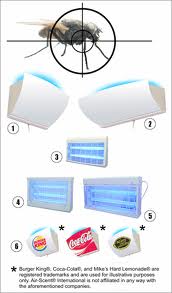
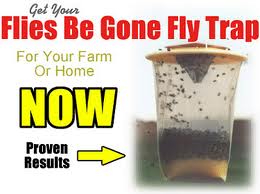
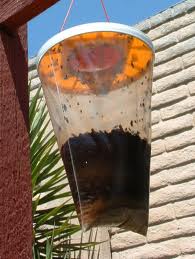
Human bed bugs (Cimex lectularius) are found throughout the world and are significantly increasing even though we do not understand fully all of the reasons behind this increase.
To complicate matters, there is a small group of related blood sucking bugs in the family Cimicidae including bat bugs and swallow bugs that can be confused with human bed bugs. For example, bat bugs (Cimex pilosellus) look similar to human bed bugs but control efforts must involve elimination of bats from a structure to be effective.
1. How to prevent bed bug infestations
Human bed bugs (Cimex lectularius) are constantly being transported and dispersed in luggage, bedding and other items such as bedroom furniture. Once transported to a dwelling, bed bugs typically live in cracks and crevices in the bedroom and feed on people during the night time.
- Check into the mattress. Carefully remove the sheets and examine the head section of the bed, look at the seams of the mattress as well as both sides of the head board. If you see any small insects in either of these locations, they are probably bed bugs.

Above: Bed bugs hiding under seam of mattress
2. Recognizing bed bug bites
Frequently, the first evidence of the presence of bed bugs is the sudden appearance of very itchy bites on your torso. It is important to seek medical attention if bites alone are the only evidence of bed bugs. Dermatologists may recognize skin rashes, allergies and other conditions that are not insect bites.
There are several other insects and arthropods that will produce itchy welts very similar to bed bug bites. This is because mosquitoes, fleas, lice, mites and bed bugs all inject salvia during the feeding process to thin human blood. This anti-coagulant material is largely responsible for the "itchiness” of bites. Individuals vary greatly in their skin response to different insect and arthropod saliva and over time some individuals may become either more or less affected.
3. Bed bug biology and behavior
After feeding, a female bed bug will lay eggs in their daytime refuge of cracks and crevices. Each egg is whitish in color and flask-shaped. These eggs are visible to the human eye and can be found close to the hiding places of immature bed bugs, under seams of mattresses and in other similar places. An immature bed bug may take several months to mature to an adult and an adult bed bug can live for up to one year. During development, the young bed bug will feed frequently on the blood of humans and they can exist for many months between blood meals. This means it is not practical to starve bed bugs by staying away for short periods of time, instead this activity may serve to spread bed bugs more quickly in a facility.
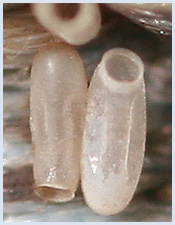 |
 |
| i. Bed bug eggs | ii. Bed bug nymph |
Bed bugs inject saliva into the blood stream of their host to thin the blood and to prevent coagulation. It is this saliva that causes the intense itching and welts. The delay in the onset of itching gives the feeding bed bug time to escape into cracks and crevices. In some cases, the itchy bites can develop into painful welts that last several days. The good news is that this insect is not known to transmit human disease. There is considerable individual variation in the response to bed bug bites. Some individuals may respond less to the bites over time while others may increase in their reaction to bed bug bites. This makes it difficult to identify the exact date when bed bugs first appear since bites are usually the first clue that bed bugs are present.
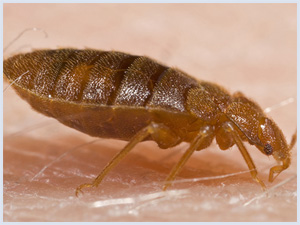
How do you kill bed bug eggs?
Most insect eggs are safe inside a shell or chorion which protects them from pesticides. Bed bug eggs hatch in about one to three weeks depending upon the temperature. This would mean a follow up inspection after three weeks would be a good idea. Most residual pesticides last for one month; so
Where bed bugs are hiding in the room?
Examine bedroom furniture for bed bugs or their dark droppings.
You should check:
- behind the headboard
- in the seams and tufts of the mattress, and around or inside the box spring
- along the crevices of bedroom baseboards, especially the baseboard area below the headboard
- inside and around nightstands
- behind or within other items or cracks in the bedroom (for example, window and door casings, pictures, and moldings, nearby furniture, loosened wallpaper, and cracks in plaster and partitions, and clutter)
Clean areas where bedbugs hide
- Thoroughly clean all bedding, linens, curtains, rugs, carpets, and clothes. Washing items in hot water and drying them on the highest dryer setting will kill bed bugs. For those items that may be harmed by washing and drying at high temperatures, soak in warm water with lots of laundry soap for several hours before rinsing.
- Wipe away or vacuum all dust from the bed frame, nearby furniture, floors and carpets. Vacuum mattresses carefully. After vacuuming, immediately place the vacuum cleaner bag in a plastic bag, seal it tightly, and throw the bag away in an outdoor container.
- If you find bed bugs on the mattress, buy a waterproof zippered mattress cover. These covers often say "allergen rated,” or "for dust mites.” Scrub the mattress seams with a stiff brush to dislodge bed bugs and any eggs. Then enclose the mattress in the cover for at least one year. This will trap any remaining bed bugs inside the cover, killing them.
- Throw away and replace an infested box spring if necessary.
G. TERMITE

